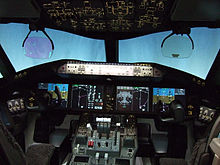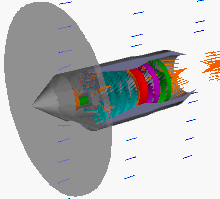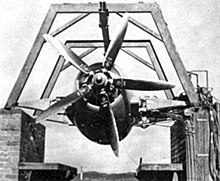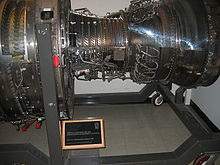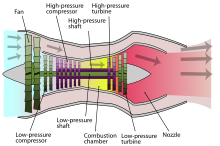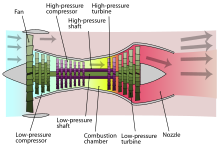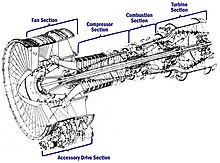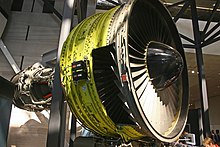The Boeing 787 Dreamliner is a long-range, mid-size wide-body, twin-engine jet airliner developed by Boeing Commercial Airplanes. It seats 210 to 330 passengers, depending on the variant. Boeing states that it is the company's most fuel-efficient airliner and the world's first major airliner to use composite materials for most of its construction. The 787 consumes 20% less fuel than the similarly-sized Boeing 767. Some of its distinguishing features include a four-panel windshield, noise-reducing chevrons on its engine nacelles, and a smoother nose contour.
The aircraft's initial designation was 7E7, prior to its renaming in January 2005. The first 787 was unveiled in a roll-out ceremony on July 8, 2007, at Boeing's Everett assembly factory, by which time it had become the fastest-selling wide-body airliner in history with 677 orders. By March 2011, 835 Boeing 787s had been ordered by 56 customers. As of 2011, launch customer All Nippon Airways has the largest number of 787s on order.
The 787 development and production has involved a large-scale collaboration with numerous suppliers around the globe. It is being assembled at the Boeing Everett Factory in Everett, Washington. Aircraft will also be assembled at a new factory in North Charleston, South Carolina. Both sites will deliver 787s to airline customers. Originally planned to enter service in May 2008, the project has suffered from repeated delays and is now more than three years behind schedule. The airliner's maiden flight took place on December 15, 2009, and it is currently undergoing flight testing with a goal of receiving certification in mid-2011 and entering service with All Nippon Airways in the third quarter of 2011.
Development
Background
During the late 1990s, Boeing began considering replacement aircraft programs as sales for the 767 and Boeing 747-400 slowed. The company proposed two new aircraft, the 747X, which would have lengthened the 747-400 and improved efficiency, and the Sonic Cruiser, which would have achieved 15% higher speeds (approximately Mach 0.98) while burning fuel at the same rate as the existing 767. Market interest for the 747X was tepid, but the Sonic Cruiser had brighter prospects. Several major airlines in the United States, including Continental Airlines, initially showed enthusiasm for the Sonic Cruiser concept, although they also expressed concerns about the operating cost.

Earlier proposed design configuration of the Boeing 7E7.
The global airline market was upended by the September 11, 2001 attacks and increased petroleum prices, making airlines more interested in efficiency than speed. The worst-affected airlines, those in the United States, had been considered the most likely customers of the Sonic Cruiser, and thus Boeing officially canceled the Sonic Cruiser on December 20, 2002. Switching tracks, the company announced an alternative product using Sonic Cruiser technology in a more conventional configuration, the 7E7, on January 29, 2003. The emphasis on a smaller midsize twinjet rather than a large 747-size aircraft represented a shift from hub-and-spoke theory towards the point-to-point theory, in response to analysis of focus groups.
| “ | The 7E7 looks fairly traditional on the outside, but it will be dramatically different on the inside. | ” |
—Times |
The replacement for the Sonic Cruiser project was dubbed the "7E7" (with a development code name of "Y2"). Technology from the Sonic Cruiser and 7E7 was to be used as part of Boeing's project to replace its entire airliner product line, an endeavor called the Yellowstone Project (of which the 7E7 became the first stage). Early concept images of the 7E7 included rakish cockpit windows, a dropped nose and a distinctive "shark-fin" tail. The "E" was said to stand for various things, such as "efficiency" or "environmentally friendly"; however, in the end, Boeing claimed that it stood merely for "Eight". In July 2003, a public naming competition was held for the 7E7, for which out of 500,000 votes cast online the winning title was Dreamliner. Other names in the pool included eLiner, Global Cruiser and Stratoclimber.
Design effort
On April 26, 2004, Japanese airline All Nippon Airways became the launch customer for the 7E7 Dreamliner, by announcing a firm order for 50 aircraft with deliveries to begin in late 2008. All Nippon Airways's order was initially specified as 30 787-3, 290–330 seat, one-class domestic aircraft, and 20 787-8, long-haul, 210–250 seat, two-class aircraft for regional international routes such as Tokyo Narita–Beijing. The aircraft would allow All Nippon Airways to open new routes to cities not previously served, such as Denver, Moscow, and New Delhi. The 787-3 and 787-8 were to be the initial variants, with the 787-9 entering service in 2010.

All Nippon Airways launched the 787 Dreamliner program with an order for 50 aircraft in 2004. This aircraft made an emergency landing during a test flight in Texas, on November 9, 2010.
The 787 was designed to become the first production composite airliner, with the fuselage assembled in one-piece composite barrel sections instead of the multiple aluminum sheets and some 50,000 fasteners used on existing aircraft. Boeing selected two new engine types to power the 787, the General Electric GEnx and Rolls-Royce Trent 1000. Boeing claimed the 787 would be near to 20% more fuel-efficient than the 767, with one-third of the efficiency gain from the engines, another third from aerodynamic improvements and the increased use of lighter-weight composite materials, and the final third from advanced systems.
During the design phase, the 787 underwent extensive wind tunnel testing at Boeing's Transonic Wind Tunnel, QinetiQ's five-meter wind tunnel at Farnborough, UK, and NASA Ames Research Center's wind tunnel, as well as at the French aerodynamics research agency, ONERA. The final styling of the aircraft was more conservative than earlier proposals, with the fin, nose, and cockpit windows changed to a more conventional form. By the end of 2004, customer-announced orders and commitments for the 787 reached 237 aircraft. Boeing initially priced the 787-8 variant at US$120 million, a low figure that surprised the industry. In 2007, the list price was US$146–151.5 million for the 787-3, US$157–167 million for the 787-8 and US$189–200 million for the 787-9.
Manufacturing and suppliers
After stiff competition, Boeing announced on December 16, 2003, that the 787 would be assembled in its factory in Everett, Washington. Instead of building the complete aircraft from the ground up in the traditional manner, final assembly would employ just 800 to 1,200 people to join completed subassemblies and to integrate systems. Boeing assigned its global subcontractors to do more assembly themselves and deliver completed subassemblies to Boeing for final assembly. This approach was intended to result in a leaner and simpler assembly line and lower inventory, with pre-installed systems reducing final assembly time by three-quarters to three days.
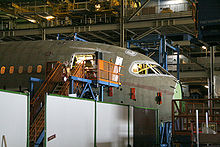
Assembly of Section 41 of a Boeing 787
Subcontracted assemblies included wing manufacture (Mitsubishi Heavy Industries, Japan, central wing box) horizontal stabilizers (Alenia Aeronautica, Italy; Korea Aerospace Industries, South Korea); fuselage sections (Global Aeronautica, Italy; Boeing, North Charleston, USA; Kawasaki Heavy Industries, Japan; Spirit AeroSystems, Wichita, USA; Korean Air, South Korea); passenger doors (Latécoère, France); cargo doors, access doors, and crew escape door (Saab, Sweden); floor beams (TAL Manufacturing Solutions Limited, India); wiring (Labinal, France); wing-tips, flap support fairings, wheel well bulkhead, and longerons (Korean Air, South Korea); landing gear (Messier-Dowty, France); and power distribution and management systems, air conditioning packs (Hamilton Sundstrand, Connecticut, USA). Boeing is considering bringing construction of the 787-9 tail in house; the tail of the 787-8 is currently made by Alenia.
To speed delivery of the 787's major components, Boeing modified several used 747-400s into 747 Dreamlifters to transport 787 wings, fuselage sections, and other smaller parts. Japanese industrial participation was very important to the project, with a 35% work share, the first time Japanese firms had taken a lead role in mass production of Boeing airliner wings, and many of the subcontractors supported and funded by the Japanese government. On April 26, 2006, Japanese manufacturer Toray Industries and Boeing announced a production agreement involving US$6 billion worth of carbon fiber, extending a 2004 contract and aimed at easing production concerns.
Production and delivery delays
Boeing had originally planned for a first flight by the end of August 2007 and premiered the first 787 at a rollout ceremony on July 8, 2007, which matches the aircraft's designation in the US-style month-day-year format (7/8/07). However, the aircraft's major systems had not been installed at that time, and many parts were attached with temporary non-aerospace fasteners requiring their later replacement with flight fasteners. Although intended to shorten the production process, 787 subcontractors initially had difficulty completing the extra work, because they could not procure the needed parts, perform the subassembly on schedule, or both, leaving remaining assembly work for Boeing to complete as "traveled work".
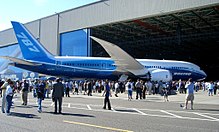
The 787 Dreamliner's first public appearance was webcast live on July 8, 2007.
On September 5, Boeing announced a three-month delay, blaming a shortage of fasteners as well as incomplete software. On October 10, 2007, a second three-month delay to the first flight and a six-month delay to first deliveries was announced due to problems with the foreign and domestic supply chain, including an ongoing fastener shortage, the lack of documentation from overseas suppliers, and continuing delays with the flight guidance software. Less than a week later, Mike Bair, the 787 program manager was replaced. On January 16, 2008, Boeing announced a third three-month delay to the first flight of the 787, citing insufficient progress on "traveled work". On March 28, 2008, in an effort to gain more control over the supply chain, Boeing announced that it planned to buy Vought Aircraft Industries' interest in Global Aeronautica; the company later agreed to also purchase Vought's North Charleston, S.C. factory.
On April 9, 2008, Boeing officially announced a fourth delay, shifting the maiden flight to the fourth quarter of 2008, and delaying initial deliveries by around 15 months to the third quarter of 2009. The 787-9 variant was postponed to 2012 and the 787-3 variant was to follow with no firm delivery date. On November 4, 2008, the company announced a fifth delay due to incorrect fastener installation and the Boeing machinists strike, stating that the first test flight would not occur in the fourth quarter of 2008. fter assessing the 787 program schedule with its suppliers, Boeing confirmed on December 11, 2008 that the first flight would be delayed until the second quarter of 2009.
On June 15, 2009, during the Paris Air Show, Boeing said that the 787 would make its first flight within two weeks. However, on June 23, 2009, Boeing announced that the first flight is postponed "due to a need to reinforce an area within the side-of-body section of the aircraft". Boeing provided an updated 787 schedule on August 27, 2009, with the first flight planned to occur by the end of 2009 and deliveries to begin at the end of 2010. The company expects to write off US$2.5 billion because it considers the first three Dreamliners built unsellable and suitable only for flight tests.
Boeing announced on July 15, 2010, that the first delivery to launch customer All Nippon Airways could slip into 2011, and on August 27, 2010 it confirmed that the first delivery would be delayed until early 2011. Boeing and Rolls-Royce state a lack of Trent 1000 engines as the cause, following shutdown of Rolls-Royce's test facility after a blowout in a Trent 1000 during ground testing on August 2. In August 2010, it was announced that Boeing was facing a US$1 billion compensation claim from Air India due to the delays for the 27 Dreamliners it has on order. Within months, in early November 2010, it was reported that some early 787 deliveries may be delayed, in one case some three months, to allow for rework to address issues found during flight testing. In January 2011, Boeing announced that the first 787 delivery was rescheduled to the third quarter of 2011 due to software and electrical updates following the in-flight fire in November 2010.
On April 20, 2011 the National Labor Relations Board found that Boeing's second production line for the 787 in South Carolina violated two sections of the National Labor Relations Act.
Pre-flight ground testing

The first Boeing 787 underwent taxi tests at Paine Field in November and December 2009.
As Boeing worked with its suppliers on early 787 production, the aircraft design had proceeded through a series of test goals. On August 7, 2007, on-time certification of the Rolls-Royce Trent 1000 engine by European and US regulators was received. On August 23, 2007, a crash test involving a vertical drop of a partial composite fuselage section from about 15 ft (4.6 m) onto a 1 in (25 mm)-thick steel plate occurred in Mesa, Arizona; the results matched what Boeing's engineers had predicted, allowing modeling of various crash scenarios using computational analysis instead of further physical tests.
The alternative GE GEnx-1B engine achieved certification on March 31, 2008. On June 20, 2008, the 787 team achieved "Power On" of the first aircraft, powering and testing the aircraft's electrical supply and distribution systems. A non-flight 787 test airframe was built for static testing, and on September 27, 2008, over a period of nearly two hours, the fuselage was successfully tested at 14.9 psi (102.7 kPa), which is 150 percent of the maximum pressure expected in commercial service (i.e., when flying at maximum cruising altitude). In December 2008, the Federal Aviation Administration (FAA) passed the maintenance program for the 787.
On May 3, 2009, the first test 787 was moved to the flight line following extensive factory-testing, including landing gear swings, systems integration verification, and a total run-through of the first flight. Boeing spent most of May 2009 conducting tests on the first 787 in preparation for first flight planned for July 2009. But the late discovery of a structural issue concerning the wing-to-body ("side-of-body") joint delayed first flight until December 2009. On March 28, 2010, the 787 completed the ultimate wing load test, which requires that the wings of a fully assembled aircraft be loaded to 150% of design limit load and held for 3 seconds. The wings were flexed approximately 25 ft (7.6 m) upward during the test. Unlike past aircraft however, the wings were not tested to failure. On April 7, Boeing announced that analysis of the data showed the test was a success. On December 12, 2009, the first 787 completed high speed taxi tests, the last major step before flight.

Takeoff of the first Boeing 787 built on its maiden flight
Flight test program
On December 15, 2009, Boeing conducted the Dreamliner's maiden flight with the first 787-8, originating from Snohomish County Airport in Everett, Washington at 10:27 am PST, and landing at Boeing Field in King County, Washington at 1:35 pm PST. Originally scheduled for four hours, the test flight was shortened to three hours because of bad weather. Boeing's schedule called for a 9-month flight test campaign (later revised to 8.5 months). The company's previous major aircraft, the 777, took 11 months with nine aircraft, partly to demonstrate 180-min ETOPS, one of its main features.
The 787 flight test program is composed of 6 aircraft, ZA001 through ZA006, four with Rolls-Royce Trent 1000 engines and two with GE GEnx-1B64 engines. The second 787, ZA002 in All Nippon Airways livery, flew to Boeing Field on December 22, 2009 to join the flight test program; the third 787, ZA004 joined the test fleet with its first flight on February 24, 2010, followed by ZA003 on March 14, 2010. On March 24, 2010, testing for flutter and ground effects was completed, clearing the aircraft to fly its entire flight envelope.

The first 787 to visit Europe, ZA003 on display at the 2010 Farnborough Airshow
On April 23, 2010 Boeing delivered their latest 787 to a hangar at Eglin Air Force Base, Florida for extreme weather testing in temperatures ranging from 115 °F (46 °C) to −45 °F (46 °C to −42 °C), with all steps necessary to prepare for takeoff taken once the plane stabilizes at either temperature extreme. Dreamliner ZA005, the fifth 787 and the first with General Electric GEnx engines began ground engine tests in May 2010. ZA005 made its first flight on June 16, 2010 and joined the flight test program. In June 2010, gaps were discovered in the horizontal stabilizers of test aircraft, due to improperly installed shims; all aircraft produced then were to be inspected and repaired. The 787 made its first appearance at an international air show at the Farnborough Airshow, UK on July 18, 2010.
In September 2010, it was reported that a further two 787s might join the test fleet, making a total of eight flight test aircraft. On September 10, 2010, a partial engine surge or runaway occurred in a Trent engine on ZA001 at Roswell. On October 4, 2010, the sixth 787, ZA006 joined the test program with its first flight.
On November 9, 2010, Boeing 787, ZA002 made an emergency landing after smoke and flames were detected in the main cabin during a test flight over Texas. A Boeing spokeswoman said the airliner landed safely and the crew was evacuated after landing at the Laredo International Airport, Texas. The electrical fire caused some systems to fail before landing. Following this incident, Boeing suspended flight testing on November 10, 2010. Ground testing was performed instead. On November 22, 2010, Boeing announced that the in-flight fire can be primarily attributed to foreign object debris (FOD) that was present in the electrical bay. After electrical system and software changes, the 787 resumed company flight testing on December 23, 2010.
Certification by the European Aviation Safety Agency is expected by the end of 2011. On February 24, 2011, Boeing announced that the 787 had completed 80% of the test conditions for Rolls-Royce Trent 1000 engine and 60% of the conditions for the General Electric GEnx-1B engine. As of June 17, 2011, the seven 787 test aircraft have flown 3,989 hours in 1,461 flights combined.
Design
The longest-range 787 variant can fly 8,000 to 8,500 nautical miles (14,800 to 15,700 km), enough to cover the Los Angeles to Bangkok or New York City to Taipei routes. It will have a cruising airspeed of Mach 0.85 (561 mph, 903 km/h at typical cruise altitudes). The 787-8 and −9 will be certified to 330 minute ETOPS capability. External features include raked wingtips and engine nacelles with noise-reducing serrated edges. The two different engine models compatible with the 787 use a standard electrical interface to allow an aircraft to be fitted with either Rolls-Royce or General Electric engines. This aims to save time and cost when changing engine types; while previous aircraft can have engines changed to those of a different manufacturer, the high cost and time required makes it rare. In 2006, Boeing addressed reports of an extended change period by stating that the 787 engine swap was intended to take 24 hours; engine interchangeability, it is reported, makes the 787 a more flexible asset to airlines, allowing them to change easily from one manufacturer's engine to the other if required.
Airframe

Size comparison of the Boeing 787–8 (black outline) with the Boeing 777–300 (pink), 767-300 (cyan), and 737–800 (green).
The 787 features lighter-weight construction. Its materials, listed by weight, are 50% composite, 20% aluminum, 15% titanium, 10% steel, and 5% other; the aircraft will be 80% composite by volume. Each 787 contains approximately 35 short tons of carbon fiber reinforced plastic (CFRP), made with 23 tons of carbon fiber. Aluminum is used on wing and tail leading edges, titanium used mainly on engines and fasteners, with steel used in various places.
Carbon fiber composites have a higher strength-to-weight ratio than traditional aircraft materials, and help make the 787 a lighter aircraft. Composites are used on fuselage, wings, tail, doors, and interior. Boeing had built and tested the first commercial aircraft composite section while examining the Sonic Cruiser concept nearly five years before; the Bell Boeing V-22 Osprey military transport uses over 50% composites, and the C-17 has over 16,000 lb (7,300 kg) of structural composites.
In 2006, Boeing launched the 787 GoldCare program. This is an optional, comprehensive life-cycle management service whereby aircraft in the program are routinely monitored and repaired as needed. This is the first program of its kind from Boeing: Post-sale protection programs are not new, but have usually been offered by third party service centers. Boeing is also designing and testing composite hardware so inspections are mainly visual. This will reduce the need for ultrasonic and other non-visual inspection methods, saving time and money.
Flight systems
On the 787, Honeywell and Rockwell-Collins provide flight control, guidance, and other avionics systems, including standard dual head up guidance systems, while Thales supplies the integrated standby flight display and electrical power conversion system. A version of Ethernet (Avionics Full-Duplex Switched Ethernet (AFDX) / ARINC 664) will be used to transmit data between the flight deck and aircraft systems. The flight deck features LCD multi-function displays, all of which will use an industry standard GUI widget toolkit (Cockpit Display System Interfaces to User Systems / ARINC 661). The Lockheed Martin Orion spacecraft will use a glass cockpit derived from Honeywell International's 787 flight deck. The 787 flight deck includes two head-up displays (HUDs) as a standard feature.Like other Boeing airliners, the 787 will use a yoke instead of a side-stick. The future integration of forward looking infrared into the HUD system for thermal sensing so the pilots can "see" through the clouds is under consideration.

Angled planform view of the second 787 Dreamliner during flight testing
The most notable contribution to efficiency is the new electrical architecture, which replaces
bleed air and hydraulic power sources with electrically powered compressors and pumps, as well as completely eliminating pneumatics and hydraulics from some subsystems (e.g., engine starters or brakes). The 787's engines use all-electrical bleedless systems, eliminating the superheated air conduits normally used for aircraft power, de-icing, and other functions. Another new system is a wing ice protection system that uses electro-thermal heater mats on the wing slats instead of hot bleed air that has been traditionally used.
An active gust alleviation system, similar to the system used on the B-2 bomber, improves ride quality during turbulence. Boeing, as part of its "Quiet Technology Demonstrator 2" project, is experimenting with several engine noise-reducing technologies for the 787. Among these are a redesigned air inlet containing sound-absorbing materials and redesigned exhaust duct covers whose rims are tipped in a toothed pattern to allow for quieter mixing of exhaust and outside air. Boeing expects these developments to make the 787 significantly quieter both inside and out.
Interior
The 787-8 is designed to seat 234 passengers in a three-class setup, 240 in two-class domestic configuration, and 296 passengers in a high-density economy arrangement. Seat rows can be arranged in four to six abreast in first or business (e.g., 1–2–1, 2–2–2), with eight or nine abreast in economy (e.g., 3–2–3, 2–4–2, 3–3–3). Typical seat room ranges from 46 to 61 in (120 to 150 cm) pitch in first, 36 to 39 in (91 to 99 cm) in business, and 32 to 34 in (81 to 86 cm) in economy.

Mockup of early Dreamliner cabin concept
Cabin interior width is approximately 18 feet (547 cm) at armrest, 1 inch (2.5 cm) over what was originally planned, and 15 in (38 cm) greater than that of the Airbus A330 and A340, while 5 in (13 cm) less than the A350 and 16 in (41 cm) less than the 777. For economy class in 3–2–3 or 2–4–2 arrangements, seat-bottom widths will be 18.5 in (47 cm), comparable to that found on the Boeing 777, and recommended by detailed passenger ergonomics studies; for 3–3–3 and the 2–5–2 maximum passenger density layout, seat widths would be 17.18 in (43.55 cm), with most airlines expected to select the 3–3–3 maximum passenger density configuration. Boeing engineers designed the 787 interior to better accommodate persons with mobility, sensory, and cognitive disabilities. For example, a 56-inch (142 cm) by 57-inch (145 cm) convertible lavatory includes a movable center wall that allows two separate lavatories to become one large, wheelchair-accessible facility.

Interior mockup photo showing windows and LED mood lighting options for the 787 Dreamliner.
The 787's cabin windows are larger in area than all other civil air transports in-service or in development, with dimensions of 10.7 by 18.4 in (27 by 47 cm), and a higher eye level so passengers can maintain a view of the horizon. Electrochromism-based "auto-dimming" (smart glass) instead of window shades reduces cabin glare while maintaining transparency. These are to be supplied by PPG Industries. Standard for the first time on a jetliner, cabin lighting uses light-emitting diode (LED) in three colors instead of fluorescent tubes, allowing the aircraft to be entirely 'bulbless' and have 128 color combinations.
The internal pressure will be increased to the equivalent of 6,000 feet (1,800 m) altitude instead of the 8,000 feet (2,400 m) on conventional aircraft. According to Boeing, in a joint study with Oklahoma State University, this will significantly improve passenger comfort. A higher cabin pressure is possible in part because of better properties of composite materials. Higher humidity in the passenger cabin is possible because of the use of composites, which do not corrode. Cabin air is provided by electrically driven compressors using no engine-bleed air. An advanced cabin air-conditioning system provides better air quality: Ozone is removed from outside air; HEPA filters remove bacteria, viruses, and fungi; and a gaseous filtration system removes odors, irritants, and gaseous contaminants.
Technical concerns
Composites
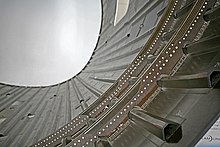
Disassembled composite fuselage section of the Boeing 787
The risks of using a composite fuselage have been questioned by a former Boeing engineer, noting that carbon fiber, unlike metal, does not visibly show cracks and fatigue; the rival A350 was later announced to be using composite panels on a frame, a more traditional approach, which its contractors regarded as less risky. Further concerns include that, during crash-landings, survivable in metal planes, a composite fuselage could shatter and burn with toxic fumes. The porous properties of composite materials, allowing them to absorb unwanted moisture, have been questioned. As the aircraft reaches altitude, the moisture expands, and may cause delamination of the composite materials, and structural weakness over time. Boeing has dismissed criticisms of its fuselage materials, insisting that composites have been used on wings and other passenger aircraft parts for many years, and they have not been an issue. They have also stated that special defect detection procedures will be put in place to detect any potential hidden damage. Another concern arises from the risk of lightning strikes, with composite having as much as 1,000 times less electrical conductivity than aluminum, increasing the risk of damage. Boeing has stated that the 787's lightning protection will meet FAA requirements, and FAA management was planning to adjust some requirements, which will help the 787 show compliance. In summer 2010, a 787 experienced an in-flight lightning strike without damage.
Weight issues
While Boeing had been working to trim excess weight since assembly of the first airframe began, common for new aircraft in development, the company has stated that the first six 787s will be overweight, with the first aircraft expected to be 5,000 lb (2,270 kg) heavier than specified. The seventh and subsequent aircraft will be the first optimized 787s and are expected to meet all goals, with Boeing working on weight reductions. Boeing has redesigned some parts and made more use of titanium. According to International Lease Finance Corporation's (ILFC) Steven Udvar-Hazy, the 787-9's operating empty weight is around 14,000 lb (6,350 kg) overweight, which also could be a problem for the proposed 787-10.
In May 2009, a press report indicated a 10–15% range reduction, about 6,900 nmi (12,800 km) instead of the originally promised 7,700 to 8,200 nmi (14,800–15,700 km), for early aircraft that were about 8% overweight. Substantial redesign work is expected to correct this, which will complicate increases in production rates; Boeing stated the early 787-8s will have a range of almost 8,000 nmi (14,800 km). There have also been reports that this led Delta to delay deliveries of 787s it inherited from Northwest in order to take later planes that may be closer to the original estimates. Other airlines are suspected to have been given discounts to take the earlier models. Shanghai Airlines stated in March 2009 it wished to either delay or cancel its first order. Boeing expects to have the weight issues addressed by the 21st production model.
Computer networks
In January 2008, previous FAA concerns came to light regarding protection of the 787's computer networks from possible intentional or unintentional passenger access. The computer network in the passenger compartment, designed to give passengers in-flight internet access, is connected to the airplane's control, navigation, and communication systems. Boeing called the report "misleading", saying that various hardware and software solutions are employed to protect the airplane systems, including air gaps for the physical separation of the networks, and firewalls for their software separation. Measures are provided so data cannot be transferred from the passenger internet system to the maintenance or navigation systems. As part of certification, Boeing plans to demonstrate to the FAA that these provisions are acceptable.
Variants

The Boeing 787–8, the first model of the aircraft under production
Boeing has offered three variants of the 787 from the program launch in 2004. The 787-8 is scheduled to enter service in 2011; the 787-9 is to enter service in 2013.
787-8
The 787-8 is the base model of the 787 family, with a length of 186 feet (57 m) and a wingspan of 197 feet (60 m) and a range of 7,650 to 8,200 nautical miles (14,200 to 15,200 km), depending on seating configuration. The 787-8 seats 210 passengers in a three-class configuration. The variant will be the first of the 787 line to enter service in 2011. Boeing is targeting the 787-8 to replace the 767-200ER and 767-300ER, as well as expand into new non-stop markets where larger planes would not be economically viable. The bulk of 787 orders are for the 787-8.
787-9
The 787-9 will be the first variant of the 787 with a "stretched" or lengthened fuselage, seating 250–290 in three classes with a range of 8,000 to 8,500 nautical miles (14,800 to 15,750 km). This variant differs from the 787-8 in several ways, including structural strengthening, a lengthened fuselage, a higher fuel capacity, a higher maximum take-off weight (MTOW), but with the same wingspan as the 787-8. The targeted date for entry into service (EIS), originally planned for 2010, was scheduled for early 2013 in December 2008. Boeing is targeting the 787-9 to compete with both passenger variants of the Airbus A330 and to replace their own 767-400ER. Like the 787-8, it will also open up new non-stop routes, flying more cargo and fewer passengers more efficiently than the 777-200ER or A340-300/500. The firm configuration was finalized on July 1, 2010.

Artist's impression of the stretched 787-9, designed with greater range and payload capability
When first launched, the 787-9 had the same fuel capacity as the other two variants. The design differences meant higher weight and resulted in a slightly shorter range than the 787-8. After further consultation with airlines, design changes were incorporated to add a forward tank to increase its fuel capacity, so it has a longer range and a higher MTOW than the other two variants. The −9 will also have the lowest seat-mile cost of the three 787 variants. Air New Zealand is the launch customer for the 787-9 and the second customer for the 787 behind ANA.
Other variants
787-3
This variant was designed to be a 290-seat (two-class) short-range version of the 787 targeted at high-density flights, with a range of 2,500 to 3,050 nautical miles (4,650 to 5,650 km) when fully loaded. A full load of passengers and cargo would limit the amount of fuel it could take on board, as with the 747-400D. This is viable only on shorter, high-density routes, such as Tokyo to Shanghai, Osaka to Seoul, or London to Berlin. Many airports charge landing fees based on aircraft weight; thus, an airliner rated at a lower maximum take-off weight (MTOW), though otherwise identical to its sibling, would pay lower fees. It was designed to replace the Airbus A300/A310 and Boeing 757–300/767–200 on regional routes from airports with restricted gate spacing. It would have used the same fuselage as the 787-8, though with some areas of the fuselage strengthened for higher cycles. The wing would have been derived from the 787-8, with blended winglets replacing raked wingtips. The change would have decreased the wingspan by roughly 25 feet (7.6 m), allowing the 787-3 to fit into more domestic gates, in particular, in Japan. This model would have been limited in its range by a reduced MTOW of 364,000 lb (165,100 kg).

An artist's impression of the 787-3, which would have featured a shorter wing with winglets.
Boeing has projected that the future of aviation between very large (but close) cities of five million or more may stabilize around the capacity level of the 787-3. Boeing also believed legacy carriers could have used this variant to compete with low-cost airlines by running twice the capacity of a single-aisle craft for less than twice its operating cost (fuel, landing fees, maintenance, number of flight crew, airspace fees, parking fees, gate fees, etc.).
Forty-three 787-3s were ordered by the two Japanese airlines, but production problems on the base 787-8 model led Boeing to postpone the introduction of the 787-3 in April 2008, following the 787-9 but without a firm delivery date.[ By December 2009, all 787-3 orders had been converted to the 787-8. At the time, it was likely the 787-3 variant would be shelved entirely following the lack of interest by potential customers caused by its being designed specifically for the Japanese market. On December 13, 2010, Boeing did cancel the 787-3, since it was no longer financially viable after its orders were canceled.
787-10
Boeing has stated that it is likely to develop another version, the longer 787-10, with seating capacity between 290 and 310. This proposed model is intended to compete with the planned Airbus A350-900. The 787-10 would supersede the 777-200ER in Boeing's current catalog and could also compete against the Airbus A330-300 and A340-300. Boeing was having discussions with potential customers about the 787-10 in 2006 and 2007. This variant has not yet been officially launched by Boeing, but Mike Bair, at that time head of the 787 program, stated that "It's not a matter of if, but when we are going to do it ... The 787-10 will be a stretched version of the 787-9 and sacrifice some range to add extra seat and cargo capacity." The 787-10 has remained under consideration by Boeing.
Further proposals
Although no date has been set, Boeing expects to build a freighter version, possibly in 10 to 15 years. Boeing is reported to be also considering a 787 variant as a candidate to replace the 747-based VC-25 as Air Force One.
Orders and deliveries
The Boeing 787 has not entered service. The first 787 is scheduled to enter passenger service in 2011 with All Nippon Airways. ILFC (International Lease Finance Corporation) is its largest customer ordering a total of 74 Boeing 787s, comprising 33 -8s and 41 -9s.
Net orders (cumulative by year)
 |
| Data through May 2011. |
Boeing 787 total firm orders
| 787-8 | 787-9 | Total firm orders |
| 569 | 266 | 835 |
Orders and deliveries by year
| 2004 | 2005 | 2006 | 2007 | 2008 | 2009 | 2010 | 2011 | Total |
|---|
| Net orders | 56 | 235 | 157 | 369 | 93 | −59 | −4 | −12 | 835 |
|---|
| Deliveries | – | – | – | – | – | – | – | – | – |
|---|
Specifications
| Model | 787-8 | 787-9 |
|---|
| Cockpit crew | Two |
|---|
| Seating, typical | 210–250
242 (3-class) | 250–290
280 (3-class) |
|---|
| Length | 186 ft (56.7 m) | 206 ft (62.8 m) |
|---|
| Wingspan | 197 ft 0 in (60.0 m) | 197 ft 0 in (60.0 m) |
|---|
| Wing area | 3,501 sq ft (325 m2) |
|---|
| Wing sweepback | 32.2 degrees |
|---|
| Height | 55 ft 6 in (16.9 m) |
|---|
| Fuselage dimensions | Width: 18 ft 11 in (5.77 m) / Height: 19 ft 7 in (5.97 m) |
|---|
| Maximum cabin width | 18 ft (5.49 m) |
|---|
| Cargo capacity | 4,822 cu ft (137 m3)
28× LD3
or 9x (88x125) pallets
or 8x (96x125) pallets + 2x LD3 | 6,086 cu ft (172 m3)
36× LD3
or 11x (88x125) pallets
or 11x (96x125) pallets |
|---|
| Maximum takeoff weight | 502,500 lb (228,000 kg) | 553,000 lb (251,000 kg) |
|---|
| Maximum landing weight | 380,000 lb (172,000 kg) | 425,000 lb (193,000 kg) |
|---|
| Maximum Zero-Fuel Weight | 355,000 lb (161,000 kg) | 400,000 lb (181,000 kg) |
|---|
| Operating empty weight | 242,000 lb (110,000 kg) | 254,000 lb (115,000 kg) |
|---|
| Cruising speed | Mach 0.85 (567 mph, 490 knots, 913 km/h at 35,000 ft/10,700 m) |
|---|
| Maximum speed | Mach 0.89 (593 mph, 515 knots, 954 km/h at 35,000 ft/10,700 m) |
|---|
| Range, fully loaded | 7,650–8,200 nmi (14,200–15,200 km; 8,800–9,440 mi) | 8,000–8,500 nmi (14,800–15,700 km; 9,210–9,780 mi) |
|---|
| Maximum fuel capacity | 33,528 US gal (126,920 L) | 36,641 US gal (138,700 L) |
|---|
| Service ceiling | 43,000 ft (13,100 m) |
|---|
| Engines (×2) | General Electric GEnx or Rolls-Royce Trent 1000 |
|---|
| Thrust (×2) | 64,000 lbf (280 kN) | 71,000 lbf (320 kN) |
|---|
Sources: 787 brochure, 787-8 Airport report, 787 fact sheets

 παρουσιάσθηκε, μέρος των εκθεμάτων που διαθέτει, τα οποια, στο σύνολο τους, προέρχονται από την πωληθείσα Ο.Α A.E. Για τον λόγο αυτόν δεν δύναται να χαρακτηρισθεί ως Μουσείο Πολιτικής Αεροπορίας, αλλά ως « Μουσείο Ελληνικού Εθνικού Αερομεταφορέως », χωρίς αυτό να σημαίνει ότι με την προσθήκη εκθεμάτων δεν δύναται να εξελιχθεί σε κάτι τέτοιο. Χαρακτηριστική και μοναδική η συλλογή διαφόρων στολών όλων των ειδικοτήτων, του εξομειωτού πτήσεων « FRASCA » καθώς και λοιπών συσκευών και μηχανημάτων τα οποια συνέθεταν τον ζωντανό οργανισμό της Ο.Α, εκτίθενται στον χώρο αυτό. Έγγραφα και βιβλία ωρών πτήσεων, με την πολλαπλή και άγνωστη συμμετοχή, της Ο.Α και των ανθρώπων της, στους διαφόρους εθνικούς αγώνες της Ελλάδος την περίοδο αυτή ( π.χ Τουρκική εισβολή στην Κύπρο το 1974 ) έρχονται να συμπληρώσουν την όλη εικόνα. Σημειώνεται ότι στην δύναμη του Πολ.Κ.Ε.Ο.Α ( Μουσείου ) ανήκουν και τα αεροπλάνα τύπου BOEING B - 727, B – 737 και B – 747 τα οποια ευρίσκονται σταθμευμένα στο δάπεδο σταθμεύσεως του, πρώην, ανατολικού αερολιμένος Ελληνικού, έχουν ανακαινισθεί μερικώς, πρόσφατα, ενώ έχει αιτηθεί και την διάθεση ενός ΝΙΧΟΝ YS-11 από την Π.Α το οποίο θα φέρει τα χρώματα της Ο.Α Α.Ε. και τα αντίστοιχα ελληνικά διακριτικά νηολογίου κλήσεως. Τέλος, αριθμός διαφόρων ειδικών οχημάτων ( από ποδηλάτου, περιόδου 1957, εως μεταφοράς εμπορευματοκιβωτίων και κλιμάκων ) καθώς και μια, ως εκ θαύματος διασωθείσα MERCEDES 250 automatic, του Ιδρυτή της Ο.Α Α.Ε αειμνήστου, Αριστοτέλους Ωνάση, συμπληρώνουν την αεροπορική αυτή συλλογή. Επίσης το Πολ.Κ.Ε.Ο.Α προχωρεί στην σύσταση, πλέον, ενός κοινωφελούς ιδρύματος, με την επωνυμία « ΜΟΥΣΕΙΟ ΠΟΛΙΤΙΚΗΣ ΑΕΡΟΠΟΡΙΑΣ », ενώ διεκδικεί ικανή έκταση εγκαταστάσεων στο ιστορικό, πρώην αεροδρόμιο του Ελληνικού, για την πραγματοποίηση του εθνικού αεροπορικού έργου του.
παρουσιάσθηκε, μέρος των εκθεμάτων που διαθέτει, τα οποια, στο σύνολο τους, προέρχονται από την πωληθείσα Ο.Α A.E. Για τον λόγο αυτόν δεν δύναται να χαρακτηρισθεί ως Μουσείο Πολιτικής Αεροπορίας, αλλά ως « Μουσείο Ελληνικού Εθνικού Αερομεταφορέως », χωρίς αυτό να σημαίνει ότι με την προσθήκη εκθεμάτων δεν δύναται να εξελιχθεί σε κάτι τέτοιο. Χαρακτηριστική και μοναδική η συλλογή διαφόρων στολών όλων των ειδικοτήτων, του εξομειωτού πτήσεων « FRASCA » καθώς και λοιπών συσκευών και μηχανημάτων τα οποια συνέθεταν τον ζωντανό οργανισμό της Ο.Α, εκτίθενται στον χώρο αυτό. Έγγραφα και βιβλία ωρών πτήσεων, με την πολλαπλή και άγνωστη συμμετοχή, της Ο.Α και των ανθρώπων της, στους διαφόρους εθνικούς αγώνες της Ελλάδος την περίοδο αυτή ( π.χ Τουρκική εισβολή στην Κύπρο το 1974 ) έρχονται να συμπληρώσουν την όλη εικόνα. Σημειώνεται ότι στην δύναμη του Πολ.Κ.Ε.Ο.Α ( Μουσείου ) ανήκουν και τα αεροπλάνα τύπου BOEING B - 727, B – 737 και B – 747 τα οποια ευρίσκονται σταθμευμένα στο δάπεδο σταθμεύσεως του, πρώην, ανατολικού αερολιμένος Ελληνικού, έχουν ανακαινισθεί μερικώς, πρόσφατα, ενώ έχει αιτηθεί και την διάθεση ενός ΝΙΧΟΝ YS-11 από την Π.Α το οποίο θα φέρει τα χρώματα της Ο.Α Α.Ε. και τα αντίστοιχα ελληνικά διακριτικά νηολογίου κλήσεως. Τέλος, αριθμός διαφόρων ειδικών οχημάτων ( από ποδηλάτου, περιόδου 1957, εως μεταφοράς εμπορευματοκιβωτίων και κλιμάκων ) καθώς και μια, ως εκ θαύματος διασωθείσα MERCEDES 250 automatic, του Ιδρυτή της Ο.Α Α.Ε αειμνήστου, Αριστοτέλους Ωνάση, συμπληρώνουν την αεροπορική αυτή συλλογή. Επίσης το Πολ.Κ.Ε.Ο.Α προχωρεί στην σύσταση, πλέον, ενός κοινωφελούς ιδρύματος, με την επωνυμία « ΜΟΥΣΕΙΟ ΠΟΛΙΤΙΚΗΣ ΑΕΡΟΠΟΡΙΑΣ », ενώ διεκδικεί ικανή έκταση εγκαταστάσεων στο ιστορικό, πρώην αεροδρόμιο του Ελληνικού, για την πραγματοποίηση του εθνικού αεροπορικού έργου του.










